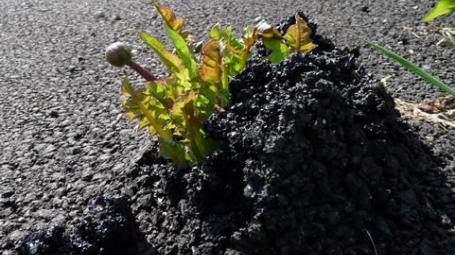Growing in the city
Once the young plant has arrived in the city, it must be able to grow. In the cracks in the concrete and under the asphalt, plants can find difficulties but also advantages in this city life.
The city, a difficult habitat
In the city, conditions are often difficult. Generally, plants need soil to spread their roots and find the essential elements for their development, in the city they often have to make do with a simple crack or a few centimetres of soil. Between two buildings, sunlight may never be available or, on the contrary, it may burn the plants all day long. Finally, the presence of many pollutants or even herbicides can alter the development of plants.
The benefits of city life
But there are advantages to moving to the city. In particular, there is less competition with other plants, as plants are rather scarce because of the difficulties mentioned above. Sometimes temperatures are less extreme in the city, and a plant that is very sensitive to frost, for example, may find it an advantage. There is also an abundance of materials rich in nitrogenous minerals (urine, waste, excrement, pollutants, etc.), which plants need for their development.
Did you know that?
Because of its chemical nature (similar to certain rocks), concrete is not very resistant to thermal shocks, which can make it crumbly and porous on the surface. It only takes a short time without maintenance for a milkweed to settle in a small crack where its roots will receive sufficient water and mineral salts to develop.
Asphalt (a mixture of bitumen, derived from petroleum, and gravel) is a very resistant material, almost non-biodegradable but much more deformable than concrete. Some plants, such as wild lettuce and dandelion, are able to establish themselves and grow spectacularly.

